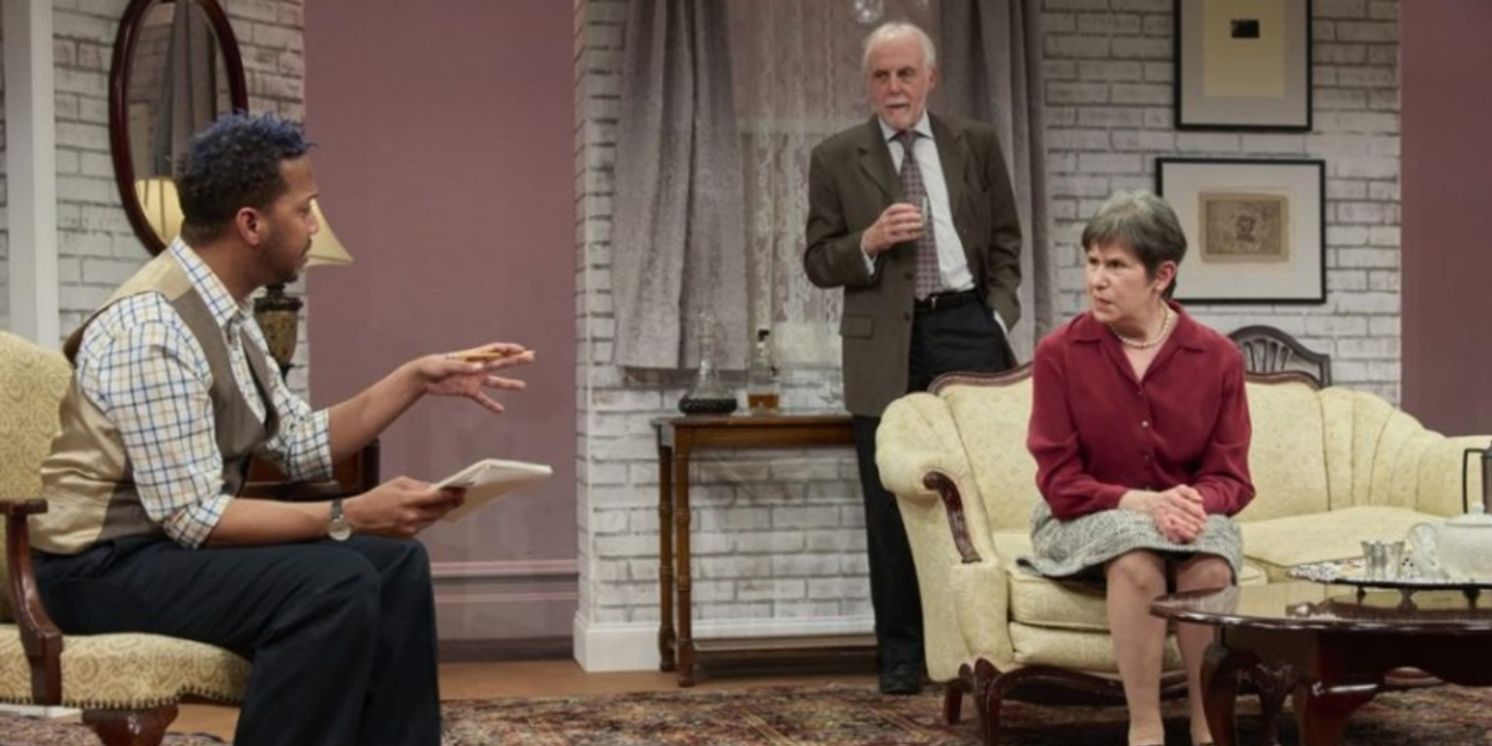Review: AN UNBUILT LIFE at Washington Stage Guild
Digging into the provenance of possibly looted paintings

It’s the painting “Girl with a Flute,” long attributed to Vermeer, that adorns the program cover of the Washington Stage Guild’s world premiere production of “An Unbuilt Life.”
The play is not about that 17th century work, which was declared just two years ago to have been not actually painted by Vermeer, but instead by an associate.
Rather, it concerns a work from the school of another Dutch artist of the era, Pieter de Hooch.
Agatha Ganner has discovered the work while settling the affairs of her late husband, a galleriest who died five months earlier. She’s curious whether it’s a fake, but becomes more consumed by its provenance. It changed hands in 1941 Paris, she learns, which raises all kinds of red flags; specifically, Nazi flags.
Was it a looted work? Does it need to be returned somewhere? Did it inadvertently end up in her husband’s hands or was it part of an insidious pattern of an effort whose details still fill newspapers as works continue to be repatriated from museums and private holdings?
Playwright Elizabeth DeSchryver draws on her interest in art history to add a lot of detail in the dialogue of “An Unbuilt Life.” As the vibrant, artful Agatha (Susan Holliday) works with a younger art scholar (JC Betram), she learns details about the work’s pallet and approach that would separate it from an actual De Hooch.
It’s fun at first, especially since the painting is propped on a chair with its back to the audience, creating a kind of mystery and anticipation to actually see it. Once it’s turned around, it doesn’t stay on stage very long, as the characters -- and the play -- increasingly dwells on the details of the provenance.
Part of the arguments over its origin comes from a dealer with whom her husband worked. Up to the last minute, apparently, it was cast as the company’s co-founder and artistic director Bill Largess (he’s listed in the program as such).
But the day before the opening, a notice went out that because of personal business to attend to, he’d have to withdraw from the role, leaving it to David Bryan Jackson, a man of many talents who had already been the sound designer and composer for the work.
He’s argumentative and irascible as the dealer Paul, who may have had a hand in enabling trade of the ill-gotten art. Still, was there a need for a fight choreographer (Bess Kaye)?
Well, there is a slap, perhaps added to add some vigor to what becomes a pretty talky two-act. Characters discuss what could happen and what had happened at an auction that is held between the two acts. We don’t get to see even that bit of action.
It makes for a rather rote morality tale, especially compared to the usual fare at Washington Stage Guild, which specializes in classics from Shaw and Wilde.
Taking a chance on a new world premiere by a late-in-life playwright is a bold move, though, especially as it addresses issues still roiling in the postwar art world. Those involved do the best they can, including director Steven Carpenter and the cast. Inserting a new actor in a three-person play at the last minute is no easy task, and there were only a few understandable flubs in the interchanges and timing on opening night.
I’d like to spotlight the work of scenic designer Joseph M. Musumeci Jr., though, who creates a stylish home for Agatha and, with the spin of a turntable stage, Paul’s office. Special recognition is due to the period-perfect iMac G4, with its half-sphere base, perfect for an art dealer’s office in 2005; and the nifty touch of a the stage’s curtain, rehung backwards, to give a taste of the behind-the-scene drama at the impending auction.
And what of that fake De Hooch at the center of the drama, titled “Mother Combing Her Daughter’s Hair”? There’s an interesting story there, too, as it was created by one of Mesumici’s former students at the Lab School of Washington. Maya Kohn, currently a student at Oberlin College, had done her senior thesis on the representation of women in the Baroque period, illustrating it with images using artificial intelligence.
She used AI to create the very credible-looking forged painting as well, which is on display in the lobby at play’s end for all to marvel. Not only is it a suitable central prop here, it suggests a future play for DeSchryver regarding AI’s growing intrusion into the arts.
Running time: About two hours, with one intermission.
Photo credit: JC Payne, David Bryan Jackson and Susan Holliday. Photo by DJ Corey. Photography.
“An Unbuilt Life” runs through May 5 at Washington Stage Guild’s Undercroft Theater at the Mount Vernon Place United Methodist Church, 900 Massachusetts Ave NW. Tickets available online.
Reader Reviews
Videos

